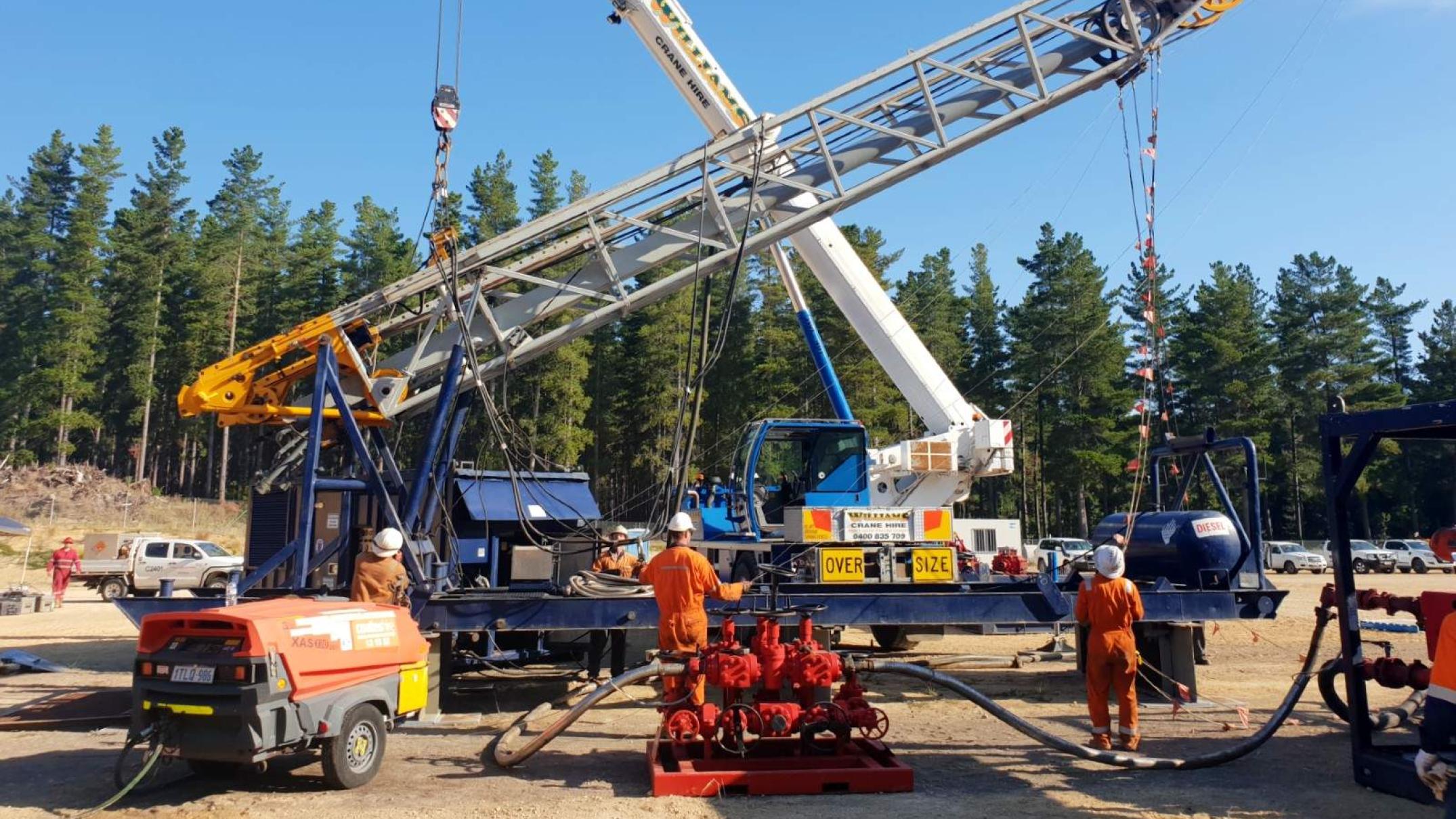After a four-month delay, testing of the Nangwarry-1 gas well will get underway next week to determine the its commercial viability.
Key points:
- Lakes Oil says it could be supply gas from the well in two years if the tests yield positive results
- The CO2 could be used to make dry ice, which is required for the transportation of COVID-19 vaccines
- The pandemic has delayed testing at Nangwarry, but the company commenced drilling earlier this year
Lakes Oil drilled more than four kilometres at the site, about 30 kilometres north of Mount Gambier, in January, after flow rate and volume tests scheduled for November last year were postponed.
Chief operating officer Tim O’Brien said 20 workers and the equipment had arrived on site for three weeks of testing.
“The plan is to aim for up to 150 tonnes a day,” he said.
“To meet that we only need a gas flow of about three million cubic feet a day, which the other wells that Beach Energy has drilled here have done sort of 10 or more times that easily.
“To make it a 15-year minimum sort of development, we’d need about 15 billion cubic feet of gas to be able to be recoverable.
“Our modelling following the drilling has indicated we’ve got about twice that there, but we won’t know how well connected we are to all of that until we’ve actually done the testing.”
Supplied: Tim O’Brien
)Growing demand
Mr O’Brien said the well could help fill the gap in demand following the closure of the nearby Caroline well several years ago.
“We’ve seen that there is actually a large demand and need for CO2 since the Caroline well shut down,” he said.
“That’s certainly increased now with the vaccine rollout, which obviously requires a lot of dry ice – which is made from CO2 – to help transport and preserve the vaccine.
Supplied: Tim O’Brien
)Mr O’Brien said if the testing went to plan the well could be supplying gas commercially in about two years.
“The good thing with CO2 is we can build a plant on site and it doesn’t actually need a lot of infrastructure,” he said.
“You don’t have to build pipelines or anything — it’s really just a purification plant to get [the gas] up to food-grade quality.
“We pump it into the tanks, the trucks come along and collect it and take it anywhere between Adelaide and Melbourne basically, so it’s going to be filling in the gap for Victoria for South Australia supplies.”




